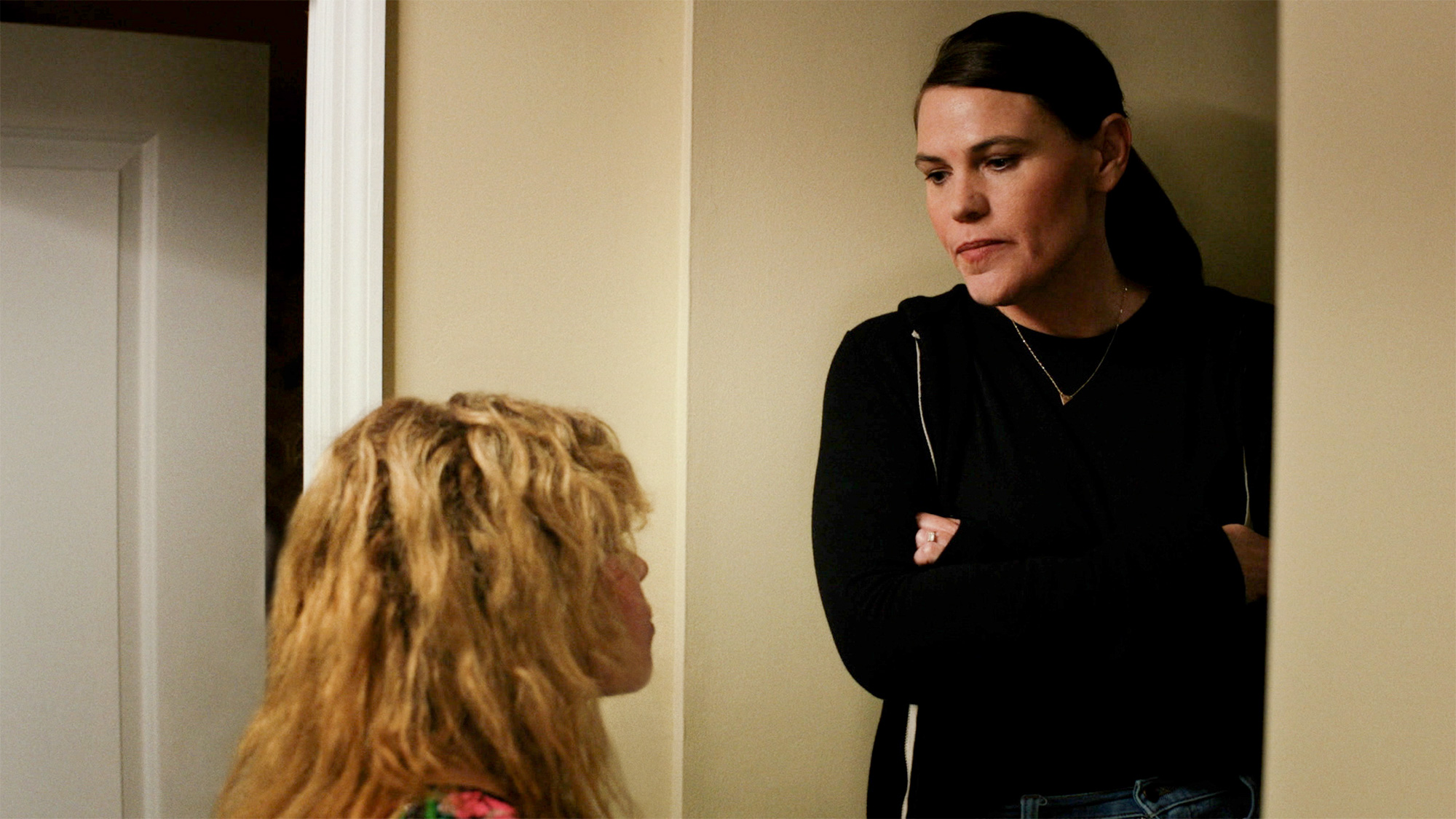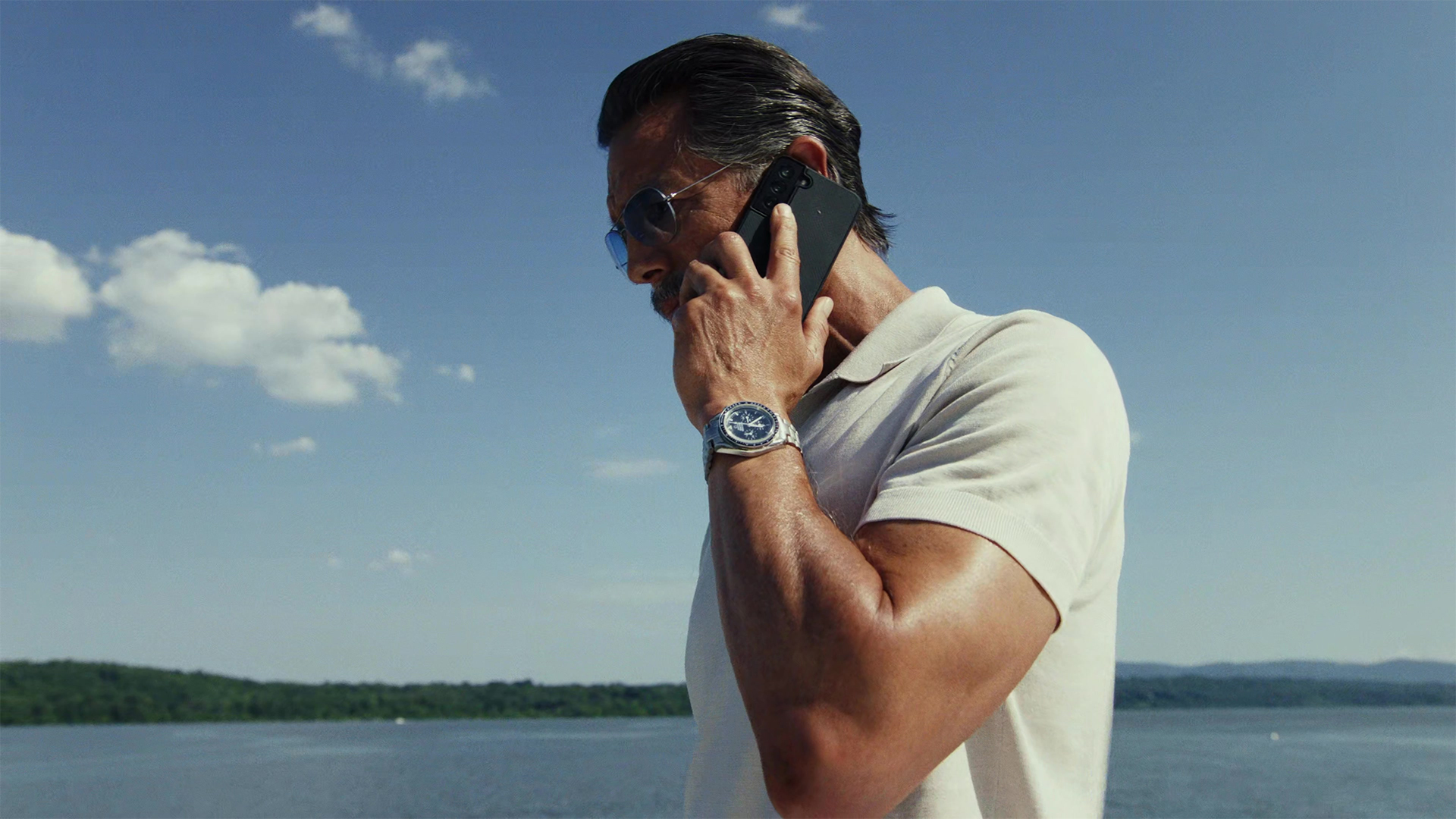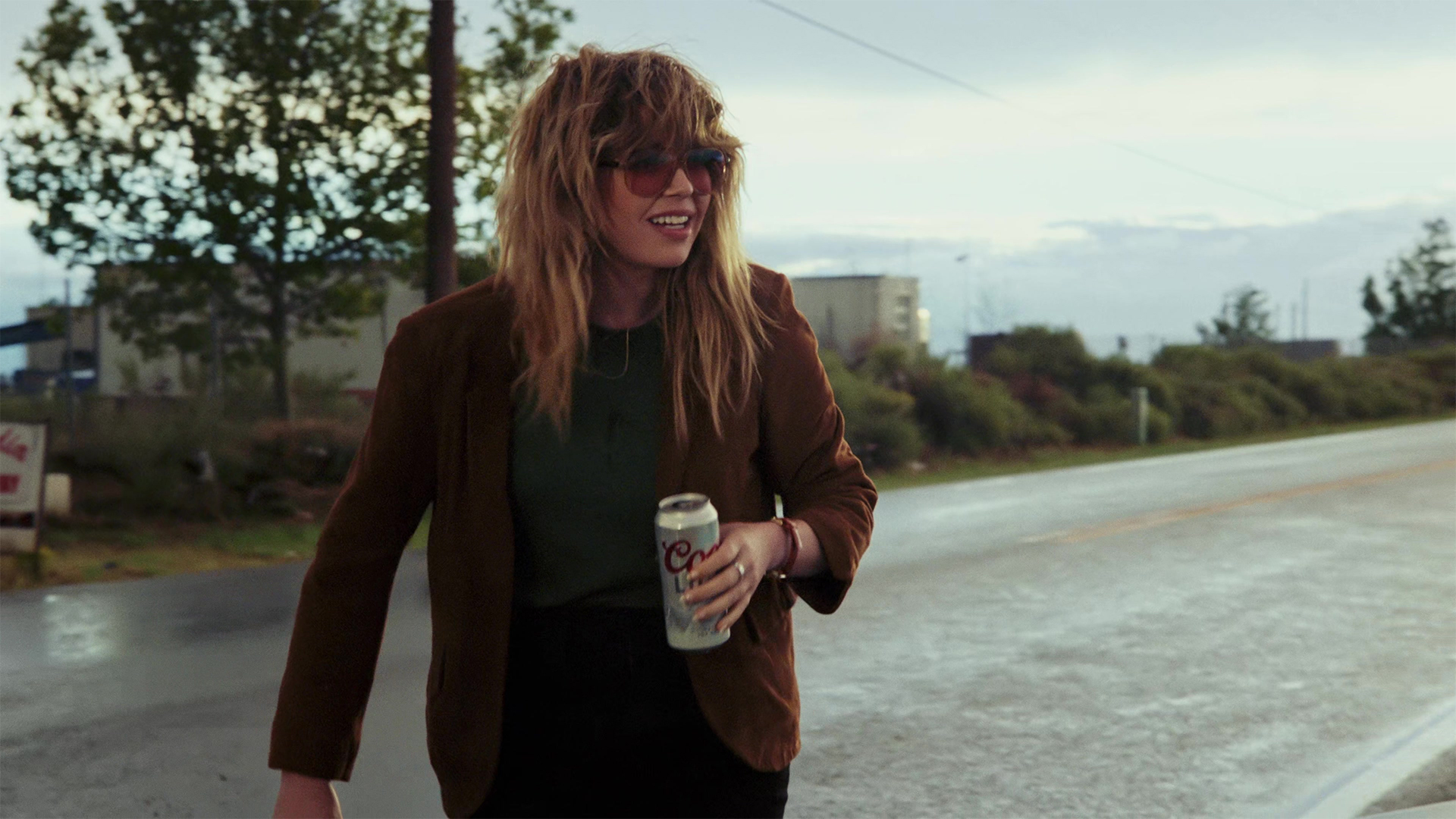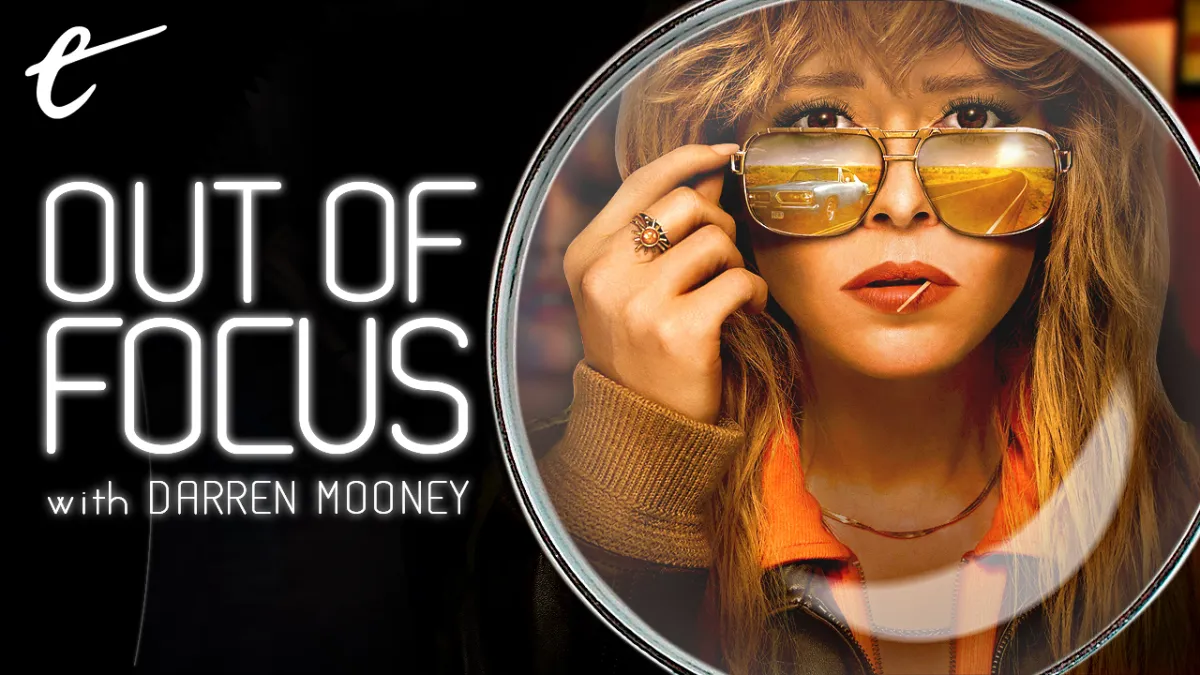This article contains spoilers for Poker Face in its discussion of how it engages with 1970s nostalgia.
Poker Face wrapped up its phenomenal first season last week, a compelling love letter to 1970s pop culture.
The show wears its influences on its sleeve. The wandering hero premise evokes 1970s shows like Kung Fu and The Incredible Hulk. Charlie Cale (Natasha Lyonne) drives across America in a 1969 Plymouth Barracuda, inspired by one owned by cinematographer Tom Richmond. The season’s eighth episode, “The Orpheus Syndrome,” is a love letter to (and features work from) Star Wars special effects legend Phil Tippett. Even the title cards and fonts are an obvious homage to Columbo.
At a casual glance, a viewer would be forgiven for assuming that Poker Face was some kind of period piece. In the premiere, “Dead Man’s Hand,” Steve Yedlin shoots Las Vegas in rich golds and deep shadows that recall the work of legendary Godfather cinematographer Gordon Willis. The episode ends with Charlie smashing her own phone, severing her ties to modernity. In “Rest in Metal,” young drummer Gavin (Nicholas Cirillo) takes polaroid pictures instead of using his phone.
The soundtrack is decidedly retro. “Dead Man’s Hand” closed with “Junior’s Farm” by Paul McCartney and Wings, setting a mood for the series. The season plays out with Neil Young’s “Walk On.” The show’s cultural references are anchored in the 1970s. In “Rest in Metal,” Charlie likens herself to Felix Unger (Tony Randall) from The Odd Couple. In that same episode, Gavin obsessively watches reruns of Benson on his tablet and even recycles the show’s theme into his catchy new track.
To be clear, Poker Face is not an uncomplicated and uncritical embrace of nostalgia. The villain of “Rest in Metal” is an aging rocker named Ruby (Chloë Sevigny) trying desperately to recapture past glories, who conspires to murder Gavin in the hope of claiming his new composition as her own. Her hope is that, in doing so, she will finally enjoy the celebrity that she feels is rightfully owed to her. Poker Face is a show that is understandably skeptical of older countercultural figures.

In “Time of the Monkey,” Charlie bonds with two 1970s radicals, Irene (Judith Light) and Joyce (S. Epatha Merkerson). Ex-convicts, they claim to have been “political prisoners.” A rebel herself, Charlie is drawn to the older women, charmed by their stories of the decade’s failed “revolution” in the face of the Nixon administration. They are “cool as shit.” Conversations play out over flashbacks of the revolutionaries passing flowers down an assembly line, evoking the “flower children” of the 1960s.
There is a yearning to “Time of the Monkey,” recalling Ruby’s attempt to recapture past glories in “Rest in Metal.” When Irene and Joyce reunite with their old lover Gabriel (Reed Birney), “Blues Run the Game” by Jackson C. Frank plays, a song used to great effect in the trailer for David Lowery’s The Old Man & the Gun, another celebration of 1960s and 1970s iconography. Lowery’s film was, allowing for Avengers: Endgame, a graceful swansong for Robert Redford, an icon of the era.
However, Charlie quickly discovers that they are monsters who were arrested for trying to blow up the model United Nations. The central conceit of Poker Face is that Charlie is able to see through lies, to determine when another person is being untruthful. This extends to her ability to see through empty nostalgia and romantic fantasies of some imagined past, to recognize figures like Ruby, Irene, and Joyce for what they truly are. Seeing is not always believing.
Charlie’s gift is interesting. Poker Face wisely avoids getting too bogged down in the mechanics of how it works, treating it as an inexplicable party trick. On the surface, it is somewhat counterintuitive to the logic of a detective show. After all, these stories are often about the gathering of evidence and the establishment of a case. In contrast, Charlie’s almost supernatural ability to discern falsehood cuts through a lot of that. It prevents Poker Face from ever becoming a true procedural.

However, this feels like it also ties back to the quintessential ’70s-ness of Poker Face. This is a show that is understandably wary of the establishment. Charlie repeatedly stresses throughout the show that she is not a police officer. When law enforcement officials appear, they tend to be either corrupt like Sheriff Parker (Noah Segan) in “Dead Man’s Hand” or well-meaning but inept like Agent Luca Clark (Simon Helberg) in “Time of the Monkey.” Charlie is largely on her own.
While this obviously reflects the paranoia and cynicism of 1970s pop culture, there’s a compelling contemporary resonance to all of this. Public faith in law enforcement has eroded in recent years, with calls for substantive reform of policing. There has also been much discussion about how popular culture has historically portrayed law enforcement in long-running procedurals like Law & Order or CSI, a trend that has come to be criticized as “copaganda.” Poker Face is engaged with those realities.
However, Charlie’s ability to see through lies ties into a very specific 1970s concern that recurs throughout Poker Face. For a show produced 50 years after the scandal began, there is a lot of Watergate to be found in Poker Face. Specifically, the show returns time and again to one specific piece of Watergate mythology: the missing 18 minutes from Nixon’s tape recordings. Throughout its first season, the series is fixated on the idea of recordings — and of gaps that exist within those recordings.
“Can you do your thing over video?” Sterling Frost Jr. (Adrien Brody) asks Charlie in “Dead Man’s Hand,” planning to use her gift to review a feed. In “The Night Shift,” Charlie notices a gap in the CCTV footage used to charge Marge (Hong Chau). In “The Stall,” Taffy (Lil Rel Howery) isn’t implicated by the murder itself, but by scrutiny of the recording of his radio show and his cover-up of an attempted murder of a dog. As Nixon noted, “It’s not the crime that gets you… it’s the cover up.”

In “The Orpheus Syndrome,” Laura (Cherry Jones) covers up her complicity in a tragic death on a film set by ordering all the reels of footage pulled from archives. When Arthur Liptin (Nick Nolte) provides her with what he claims to be the film, she burns it in a trash can in her back garden. It’s a plot point that recalls Pat Buchanan’s famous advice to Nixon that he should take the tape recordings and burn them publicly on the White House lawn.
In keeping with the show’s 1970s aesthetic, Poker Face leans on tactile and analogue documentation: film reels, video tapes, paper records. In the season finale, “The Hook,” Sterling Frost Sr. (Ron Perlman) reveals that he had his entire casino “tapped for sound since the early ’80s,” seemingly taking his cues from Nixon’s installation of a similar mechanism in the Oval Office. “In tape I trust,” Sterling Sr. states. When he offers Charlie a job, she asks him to record the offer on the same device.
To be fair, it isn’t all analogue. When Taffy uses a digital recording to fake a live radio broadcast in “The Stall,” it’s an exception that proves the rule. However, these lacunas in the official record can also be more abstract. In “Escape from Shit Mountain,” Trey Nelson (Joseph Gordon-Levitt) takes advantage of a gap in coverage of his ankle bracelet to skip out on his house arrest. Still, the idea is fundamentally the same.
In the world of Poker Face, these official documents and records are useful, but they have their limitations. In “The Hook,” Agent Clark is ultimately able to arrest Cliff Legrand (Benjamin Bratt) for the murder of Natalie (Dascha Polanco) and Jerry (Michael Reagan) in “Dead Man’s Hand” using Sterling Sr.’s tape recordings as evidence. However, Sterling Sr.’s trust in tape only gets him so far; he’s murdered by Cliff only moments later.

It is interesting to see a show that is so steeped in the iconography and imagery of the 1970s that feels so specific in its frame of reference, tapping into the same paranoid style that defined the era. The show repeatedly invokes Francis Ford Coppola’s The Conversation as a point of reference; Charlie describes obsessing over a recording “like (she) was Gene Hackman or something” in “The Stall,” and Agent Clark claims to have been “back and forth over that tape like Gene Hackman” in “The Hook.”
Of course, Watergate still haunts the American public consciousness. It was a frequent point of reference during the Trump era, to the point that Trump may even have redefined the scandal’s meaning in American consciousness. Nixon resigned in disgrace, but Trump endured despite being impeached twice. Even after his presidency, as evidence of crime and corruption mounts, there remains a very real possibility that he will face no meaningful legal consequences for his actions.
Even beyond the political context, Poker Face speaks to the reality that audiences can no longer trust what they see with their own eyes. Rupert Murdoch has admitted that America’s most-watched cable network, Fox News, knowingly lied to its viewers about claims of electoral fraud. Technological advances make it easier than ever to generate convincing video and audio deepfakes of things that never happened. Charlie’s lie detector is an increasingly essential skill to navigate the modern world.
William Faulkner famously argued, “The past is never dead. It’s not even past.” Poker Face uses its 1970s trappings and references to reflect the modern world, arguing that the tropes and conventions of the era resonate more than ever in this current moment. Poker Face isn’t just an affectionate homage to old-fashioned television storytelling; it’s also a show that is thoughtfully engaged with that nostalgia, understanding that these anxieties remain just as relevant today.






Published: Mar 15, 2023 11:00 am